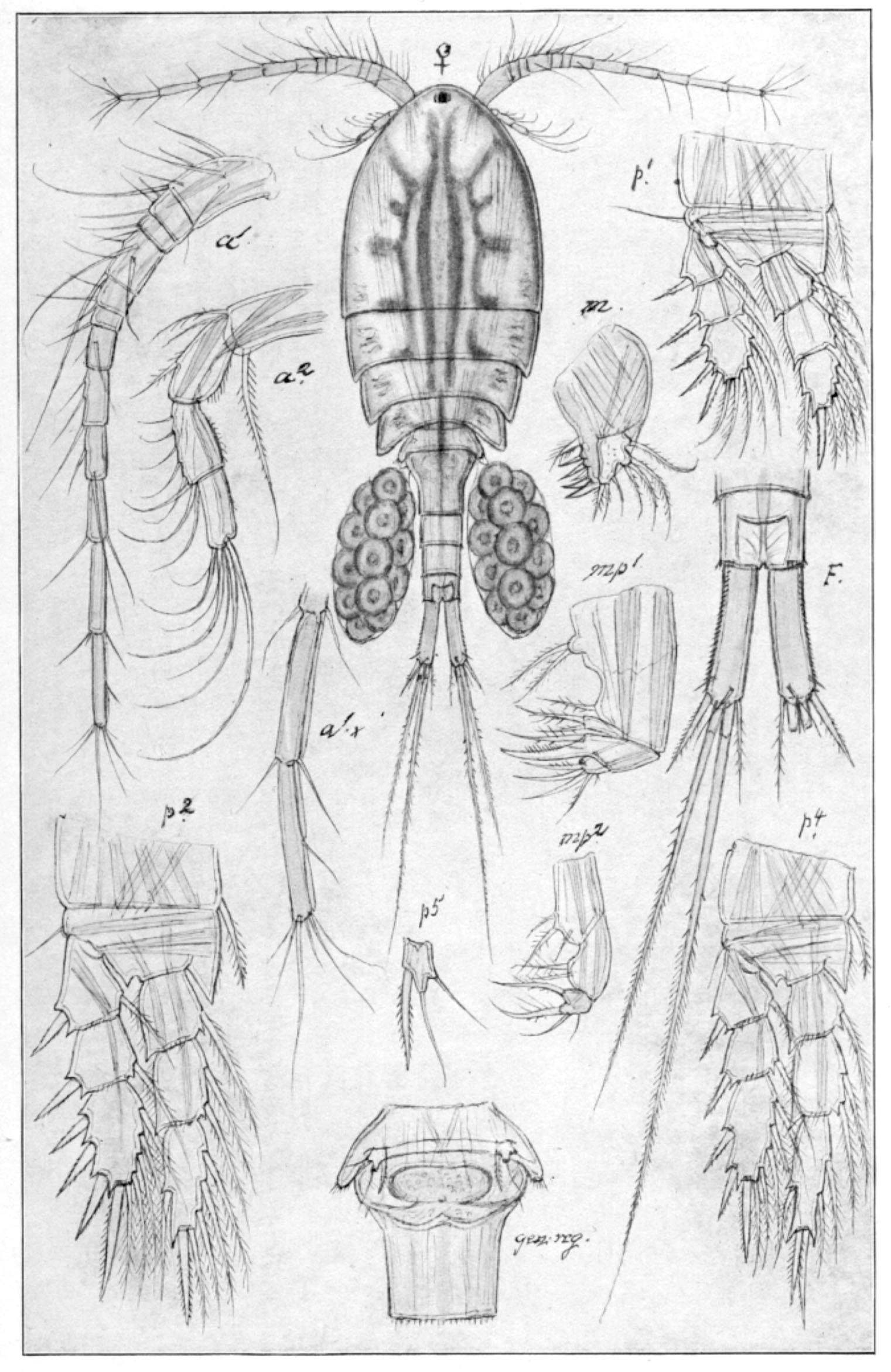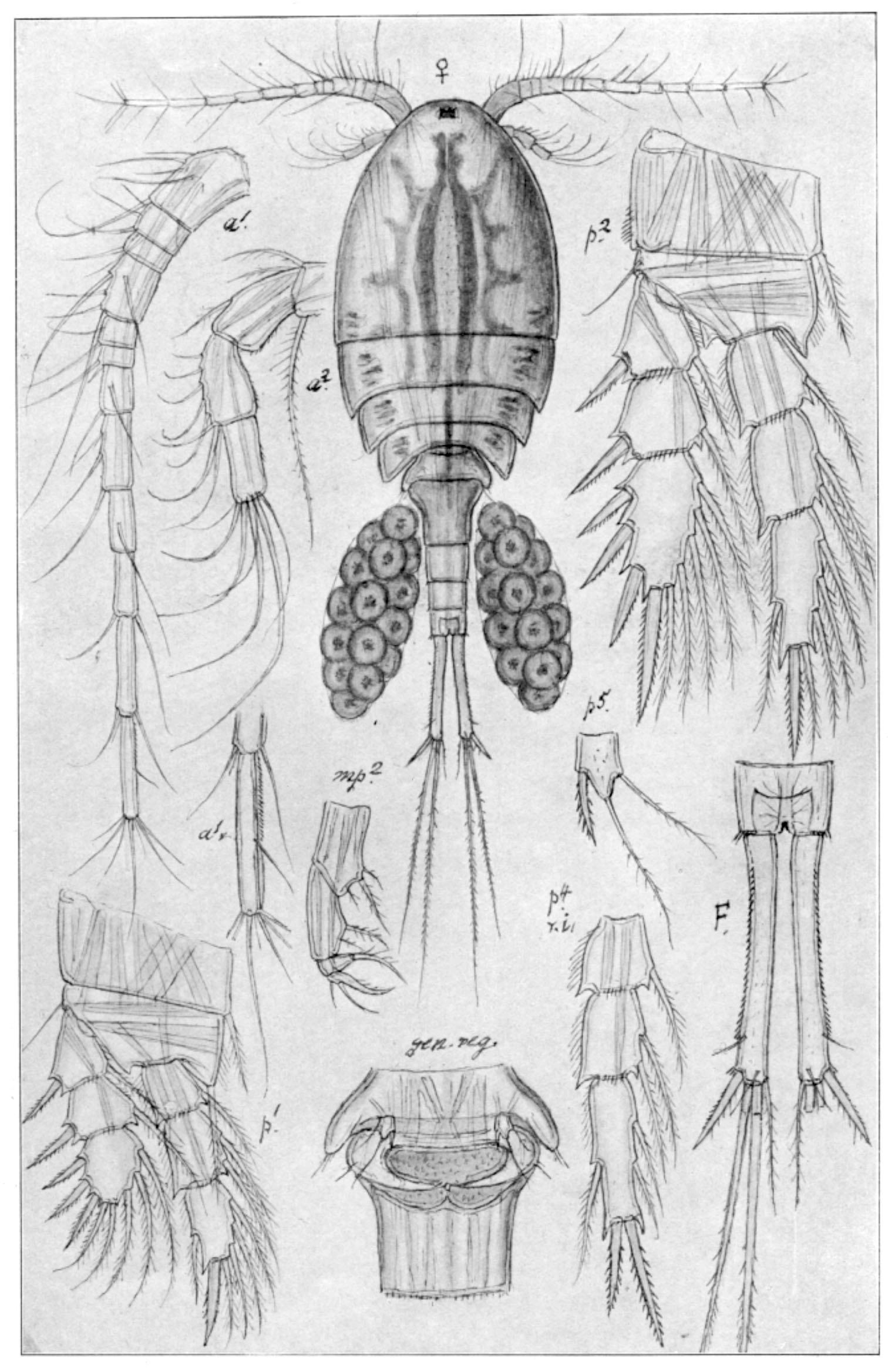Eucyclops denticulatus
In Eucyclops denticulatus the distal part of the two branches of the furca is somewhat divergent, and the last segment of the anterior antennae has 10–15 small teeth. It is moderate acid-sensitive and is widely distributed in Norway.
Key characteristics
Eucyclops denticulatus (female)
The body of Eucyclops denticulatus is moderately slender and with a furca that is approximately six times as long as wide. The distal part of the two branches of the furca is somewhat divergent, with teeth being especially conspicuous in the distal part. The proximal part of the last segment of the anterior antennae has 10–15 small teeth. Its colour is olivaceous with a brownish tinge.
Female: Length 0.9–1.2 mm
Male: Length 0.7–0.9 mm
Ecology and distribution
E. denticulatus is found in nearly 10 % of the water bodies and has a scattered distribution, being most common in the southeast. The species occurs most frequently in localities below 500 m, but is also found above the timberline and is recorded twice above 1000 m a.s.l. It is common in all types of water bodies as well as in slowly running waters. E. denticulatus is most frequently recorded when pH>5.5, and is characterized as moderate acid-sensitive. Electrolyte rich water seems to favour E. denticulatus, and it is rare in the most dilute waters.
| Vitenskapelig navn | < 4,5 | 4,5 - 4,9 | 5,0 - 5,4 | 5,5 - 5,9 | 6,0 - 6,4 | 6,5 - 7,0 | 7,0 - 7,4 | > 7,5 |
|---|---|---|---|---|---|---|---|---|
| 0 | 1,3 | 6 | 11,9 | 15,7 | 9,4 | 13,5 | 14,3 |
| Vitenskapelig navn | < 1,0 | 1,0 - 1,4 | 1,5 - 1,9 | 2,0 - 2,9 | 3,0 - 3,9 | 4,0 - 4,9 | 5,0 - 6,9 | 7,0 - 9,9 | > 10,0 |
|---|---|---|---|---|---|---|---|---|---|
| 0,4 | 3,8 | 6,8 | 8 | 11,1 | 13,6 | 17,6 | 20,4 | 11,9 |
| Vitenskapelig navn | < 0,01 | 0,01 - 0,09 | 0,1 - 0,9 | 1,0 - 9,9 | 10,0 - 99 | 100 - 999 | > 1000 |
|---|---|---|---|---|---|---|---|
| 19,6 | 7 | 8 | 9,6 | 6,6 | 10,1 | 8,7 |
| Vitenskapelig navn | < 100 | 100-299 | 300-499 | 500-699 | 700-999 | >1000 |
|---|---|---|---|---|---|---|
| 7,9 | 16,6 | 8,6 | 2,4 | 2,9 | 0,7 |
Look alikes
Eucyclops serrulatus and E. macruroides


